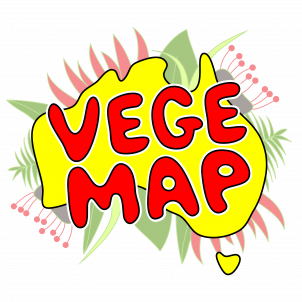College of Science and Engineering VegeMap Do science!
Do science!
- Future Students
- JCU Global Experience
- International Students
- Open Day
- How to apply
- Pathways to university
- Virtual Open Day
- Living on Campus
- Courses
- Publications
- Scholarships
- Parents and Partners
- JCU Heroes Programs
- Aboriginal and Torres Strait Islander in Marine Science
- Elite Athletes
- Defence
- Current Students
- New students
- JCU Orientation
- LearnJCU
- Placements
- CEE
- Unicare Centre and Unicampus Kids
- Graduation
- Off-Campus Students
- JCU Job Ready
- Safety and Wellbeing
- JCU Prizes
- Professional Experience Placement
- Employability Edge
- Art of Academic Writing
- Art of Academic Editing
- Careers and Employability
- Student Equity and Wellbeing
- Career Ready Plan
- Careers at JCU
- Partners and Community
- JCU-CSIRO Partnership
- Alumni
- About JCU
- Reputation and Experience
- Chancellery
- Governance
- Celebrating 50 Years
- Academy
- Indigenous Engagement
- Education Division
- Graduate Research School
- Research and Teaching
- Research Division
- Research and Innovation Services
- CASE
- College of Business, Law and Governance
- College of Healthcare Sciences
- College of Medicine and Dentistry
-
College of Science and Engineering
- About CSE
- CSE Research
- VegeMap
- Internet of Things
- Fish Passage Planning and Design
- CSE publications
- Student Resources
- Our teams
- Staff Resources
- Contact Us
- CPHMVS
- Anthropological Laboratory for Tropical Audiovisual Research (ALTAR)
- Anton Breinl Research Centre
- Agriculture Technology and Adoption Centre (AgTAC)
- Advanced Analytical Centre
- AMHHEC
- Aquaculture Solutions
- AusAsian Mental Health Research Group
- ARCSTA
- Area 61
- Lions Marine Research Trust
- Australian Tropical Herbarium
- Australian Quantum & Classical Transport Physics Group
- Boating and Diving
- Clinical Psychedelic Research Lab
- Centre for Tropical Biosecurity
- Centre for Tropical Bioinformatics and Molecular Biology
- CITBA
- CMT
- Centre for Disaster Solutions
- CSTFA
- Cyclone Testing Station
- The Centre for Disaster Studies
- Daintree Rainforest Observatory
- Fletcherview
- JCU Eduquarium
- JCU Turtle Health Research
- Language and Culture Research Centre
- MARF
- Orpheus
- TESS
- JCU Ideas Lab
- TARL
- eResearch
- Indigenous Education and Research Centre
- Estate
- Work Health and Safety
- Staff
- Discover Nature at JCU
- Cyber Security Hub
- Association of Australian University Secretaries
- Services and Resources Division
- Environmental Research Complex [ERC]
- Foundation for Australian Literary Studies
- Gender Equity Action and Research
- Give to JCU
- Indigenous Legal Needs Project
- Inherent Requirements
- IsoTropics Geochemistry Lab
- IT Services
- JCU Webinars
- JCU Events
- JCU Motorsports
- JCU Sport
- Library
- Mabo Decision: 30 years on
- Marine Geophysics Laboratory
- Office of the Vice Chancellor and President
- Outstanding Alumni
- Pharmacy Full Scope
- Planning for your future
- Policy
- PAHL
- Queensland Research Centre for Peripheral Vascular Disease
- Rapid Assessment Unit
- RDIM
- Researcher Development Portal
- Roderick Centre for Australian Literature and Creative Writing
- Contextual Science for Tropical Coastal Ecosystems
- State of the Tropics
- Strategic Procurement
- Student profiles
- SWIRLnet
- TREAD
- TropEco for Staff and Students
- TQ Maths Hub
- TUDLab
- VAVS Home
- WHOCC for Vector-borne & NTDs
- Media
- Copyright and Terms of Use
- Australian Institute of Tropical Health & Medicine
- Pay review
Ways to get involved
Get hands-on
You can help by building and monitoring your own pollen traps! It's easy - using materials you may already have at home.
Use our easy-to-follow training guides to:
- Build and install your pollen trap (PDF, 1610 KB)
- Do a plant survey in the area around your pollen trap (PDF, 2435 KB)
- Collect your pollen trap and send it back to us (PDF, 1035 KB)
Get out and about
Alternatively, you can help us monitor the pollen traps we've already installed, using our easy-to-follow training guide to:
How this helps us
It's then our job to join the dots between the plants identified in your plant surveys and the pollen collected.
We'll do that by:
- Collecting and sorting the pollen collected from all the traps installed during the project
- Categorising the types of pollen caught and measuring how much of each type was collected.
Then, we can get a better understanding of the pollen being produced by different types of plants in each of these environments. It's science!
Why do we want this information?
Believe it or not, pollen actually gives us a look into the past! Pollen is very durable and can be found fossilised from millions of years ago. Scientists have been able to use these fossils to track what vegetation existed in the past and the environments they lived in. Because some plants can produce more pollen than others and some pollen can travel great distances transported by air or insects.
We may know WHAT plants existed in the past but not HOW MANY. This is crucial to really understand big questions like ‘how quickly did environments change thousands of years ago?’, ‘what animals, birds and insects could have lived in those habitats?’, ‘how did people once navigate the lands?’.
About CABAH
VegeMap is funded by the Australian Research Council’s Centre of Excellence for Australian Biodiversity & Heritage (CABAH). CABAH is a large collaborative research group across multiple universities and other partner organisations that focus on understanding Australia’s past so we can better prepare for the future. To find our more visit epicaustralia.org.au